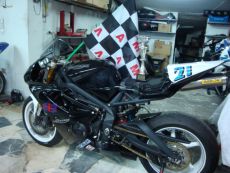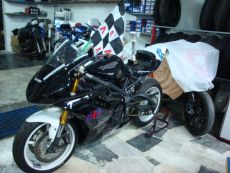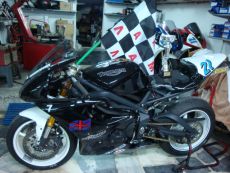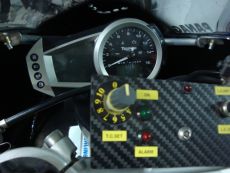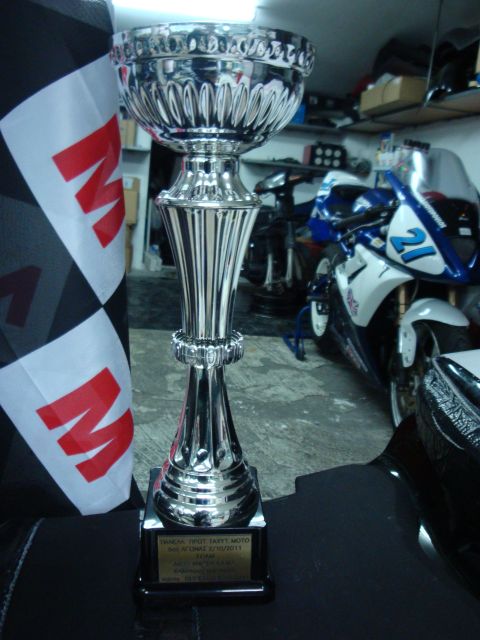Triumph Tiger 800 XC (2010- current): Much Off, even more On.
Engine: The three-cylinder liquid-cooled engine of 799 cc, provides 94 bhp/9300 rpm and 8 Kgm/7850 rpm torque, claimed values.The above numbers, especially that of the horsepower, are actually useless. The excellent torque provided combined with the superb fuelling, ensure immediate and meaty acceleration, any given moment. Consequently the power provided is adequate for every possible use, an average rider will be entirely satisfied by this performance.
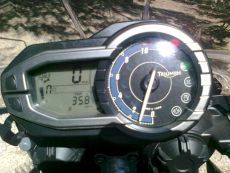
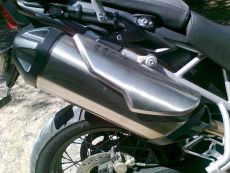
From the very low region of the power band, from 1500 rpm upwards, sufficient thrust is provided. The low power band area up to 4000 rpm, is adequate for urban rides. The engine performance is very linear up to 10000 rpm where the rev limiter intervenes.
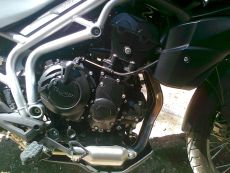
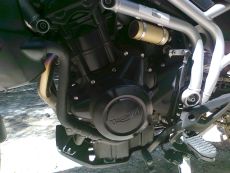
The clutch is light, while the gearbox is precise. The familiar three-cylinder Triumph sound derives from this engine also. However decelerating at the higher part of the power band, often produces irritating, yet not really loud bursts. Eventually a part of the Tiger 800 XC character is based on this engine performance to a great extent.
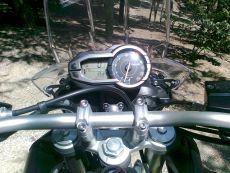
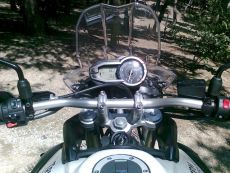
Riding position: To height of the saddle is easily adjusted in two positions. The tallest of these two is 865 mm which is considerable. The width of the saddle is steady. Only tall riders will be satisfied. The length of the bike is average for the 650/700 cc category standards, the width is increased at the fuel tank area, due to plastic protectors surrounding it.
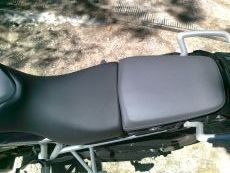
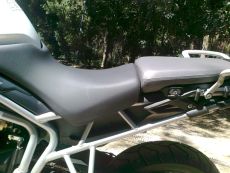
Rider is placed in and over the bike, riding position is neutral. If the saddle height is set to the lower 845 mm increment, riding position feels mostly in the bike. The handlebar may also be adjusted. The bike feels heavy, 215 kg nominal wet.

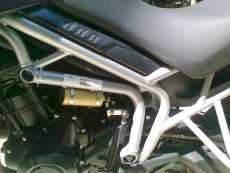
On the road: Suspension feels relatively firm for the category standards. A 45 mm inverted fork is equipped at the front, a linkage is provided at the rear shock. The only adjustments possible are preload and rebound at the shock.
The tyres fitted are Bridgestone Battle Wing, dimensions are 90/90-21 at the front and 150/70-17 at the rear. They are considered to be a very good choice for the weight and character of the XC.
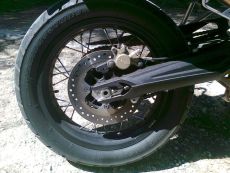
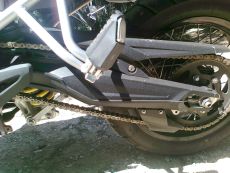
City rides will be adequate on the Tiger 800 XC. The dimensions of the bike are increased, average stature riders will not be satisfied. From the other hand, the tall riding position provides decent street supervision. Eventually urban rides will be relatively neutral.
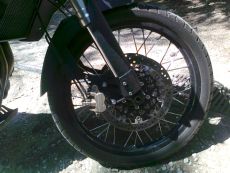
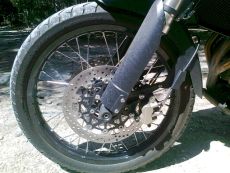
Commuting is enhanced by the XCĒs agility. Street imperfections are absorbed very well.
At the process of filtering the height of the handlebar is much greater than that of car mirrors. Its almost the same with SUVĒs mirrors. Consequently filtering is quite good.
Steering lock is superb, manoeuvring the bike around cars will be very easy.
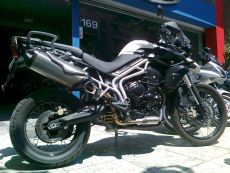
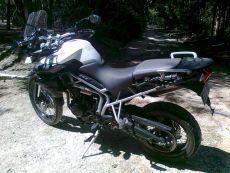
On B-roads agility is excellent, which is typical for the class. The combination of agility and firm suspension provides confidence to the rider. Road imperfections are absorbed really well.
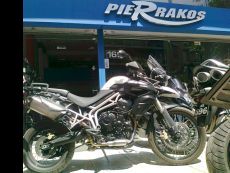
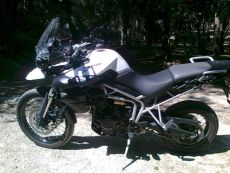
At the fast pace the Tiger 800 XC is still an effective bike, rider feels confidence from the motorcycle as a whole, feedback to the rider is reduced though during high speed cornering. This is due to the tyres and the front wheel dimension.
On low-average friction factor B-roads drift at the entry is smooth, well controlled.
On high friction factor B-roads, handling is very good.
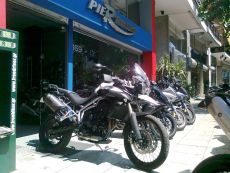
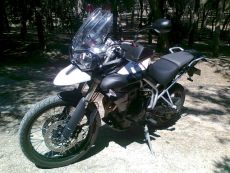
On the highway the bike is very comfortable and stable. The space provided for rider and pillion is generous. Air protection is generally good.
The extra taller and broader screen which is an optional factory accessory will provide more comfortable travelling for tall riders.
The standard screen is quite good for a highway speed of 160 km / h which will keep the rider fit for longer journeys. The indication of 200 km / h is within the potential of the bike. The design of the bike has taken into account the easier and efficient loading of the motorcycle.
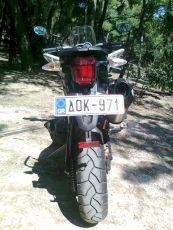
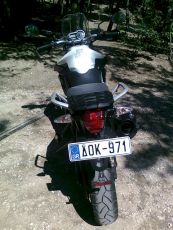
On dirt roads the XC is quite good. Initially its not the most user friendly bike around, however it does provide confidence to the rider. He will soon be charging, managing a fast pace. Comfort provided is quite good for the standards of the category.
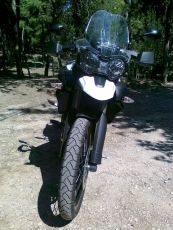
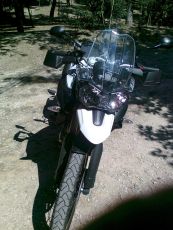
The only objection is that the screen distorts vision for the following 2 meters on the road. This depends greatly on the height of the rider.

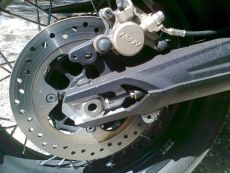
The brakes of the motorcycle under test were not equipped with ABS, Nissin brake calipers are used. There are two 308 mm front disc brakes with twin piston callipers, a 255 mm disc with single-piston at the rear brake.
Brakes are powerful, the front provides quite good feedback, the rear brake provides average feedback. The front brake is slightly more powerful than ideal for dirt use.
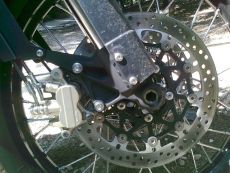
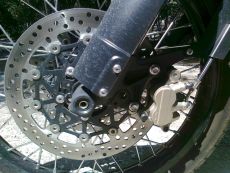
Comments: There is a 12 V socket beside the key lock. The beam of the lights may be adjusted using a small lever, which is just behind the headlamp. Quality build is very good. There are many factory optional accessories for the owner to buy.
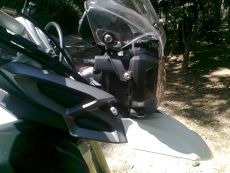
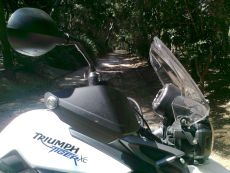
Compared with the Tiger 800, the XC model features a larger wheel at the front, wheel spokes, greater suspension travel and improved suspension. This results in a taller riding position.
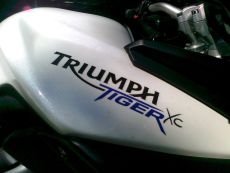
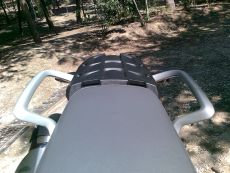
Their character difference is vast though, the Tiger 800 model resembles to a large supermoto, while the XC feels closer to the on-off category standards. Thus riding the XC is more relaxed, although itĒs a really fast bike on paved and dirt roads.
Price: 9890 Ī
+ All around character
+ Performance
+ Quality build
- Saddle height
More, specifications (U.K.)
Thanks to the motorcycle shop Pierrakos, Mihalakopoulou 169, tel. +3021077555065, Athens, for the bike test.
The following Daytona of the Pierrakos Racing Team, is ridden by Gregory Panagiotopoulos at the Greek Championship.
